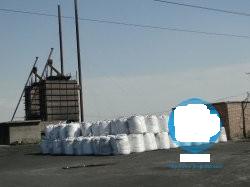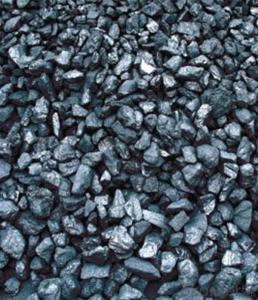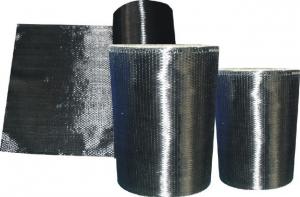Carbon Aditive F.C. 92%min
- Loading Port:
- China Main Port
- Payment Terms:
- TT OR LC
- Min Order Qty:
- -
- Supply Capability:
- -
OKorder Service Pledge
OKorder Financial Service
You Might Also Like
1.Features:
Carbon Additive also called Calcined anthracite Coal, Gas Calcined Anthracite Coal, Carbon Raiser.
The main raw material is Ningxia unique high quality anthracite, with characteristic of low ash and low sulfur. Carbon additive has two main uses, namely as the fuel and additive. When being used as the carbon additive of steel-smelting, and casting, the fixed carbon may achieve above 95%.
2.Application:
It may substitute massively refinery coke or the stone grinds. Meanwhile its cost is much less than the refinery coke and the stone grinds. Carbon Additive may also use as the fuel, for its calorific value may achieve above 9386K/KG. It may substitute burnt carbon massively. The burnt carbon exportation needs the quota; therefore the carburizing agent price superiority is similarly obvious.
3.Specifications:Chemical Composition(%) | ||||
F.C. | Ash | V.M. | S | Moisture |
%(min) | %(max) | |||
92 | 7.0 | 1.2 | 0.30 | 1.0 |
0.5-3mm, 1-4mm,0.5-4mm,1-3mm, 90%min,or at customer’s option; | ||||
In 1000kgs big bag; or 1200kgs big bag; or 25kgs small bag, then into 1000kgs big bag; or 25kgs or 50kgs small bag, then put into containers directly;or at customer’s option; | ||||
- Q: How does carbon affect the taste of food and beverages?
- Carbon can affect the taste of food and beverages by either enhancing or altering their flavor profiles. In the case of carbonated beverages, the added carbon dioxide creates a bubbly sensation, which can give a refreshing and lively mouthfeel. Carbonation also enhances the perception of acidity and can balance the sweetness in some drinks. On the other hand, when carbon-based compounds, such as those found in charred or grilled food, come into contact with heat, they can create smoky or burnt flavors that add depth and complexity to certain dishes. Overall, carbon plays a significant role in influencing the taste and sensory experience of various food and beverage products.
- Q: What are the impacts of carbon emissions on the stability of savannas?
- The impacts of carbon emissions on the stability of savannas are significant. Increased carbon emissions contribute to the greenhouse effect, leading to global warming and climate change. These changes in climate can directly affect the natural balance and stability of savannas. One of the main impacts is an alteration in rainfall patterns. Climate change can disrupt the regular rainfall cycles in savannas, leading to extended periods of drought or intense rainfall events. This can disrupt the ecosystem's natural fire regime, which is crucial for maintaining the savanna's biodiversity and preventing the encroachment of woody vegetation. Additionally, elevated carbon dioxide levels can promote the growth of certain plant species, particularly those that are more efficient at utilizing carbon dioxide. This can lead to changes in the composition and structure of savanna vegetation, favoring the growth of more dominant and invasive species. Such changes can potentially reduce the diversity and resilience of the savanna ecosystem. Furthermore, increased carbon emissions contribute to the acidification of rainwater and soils. This can negatively impact the nutrient availability and composition of savanna soils, affecting the productivity and health of the entire ecosystem. Overall, carbon emissions pose a significant threat to the stability and functioning of savannas, impacting their biodiversity, fire regime, rainfall patterns, and soil health. It is crucial to address and reduce carbon emissions to mitigate these impacts and ensure the long-term conservation of savanna ecosystems.
- Q: What are the effects of carbon emissions on the stability of estuaries?
- Estuaries, which are highly productive and diverse ecosystems, are greatly impacted by carbon emissions. These emissions, primarily in the form of carbon dioxide (CO2), contribute to climate change and ocean acidification, resulting in detrimental effects on estuaries. Sea-level rise is one of the most significant consequences of carbon emissions on estuaries. As global temperatures increase, the melting of glaciers and ice caps causes sea levels to rise. Estuaries, being low-lying areas where rivers meet the sea, are particularly vulnerable to this rise. Consequently, higher water levels lead to increased flooding, erosion, and saltwater intrusion into freshwater systems within estuaries, negatively affecting their overall stability. Furthermore, the concentration of CO2 in the atmosphere leads to ocean acidification. When CO2 dissolves in seawater, it forms carbonic acid, which lowers the water's pH. This acidification has detrimental effects on marine life within estuaries, especially organisms with calcium carbonate shells like shellfish and oysters. The increased acidity makes it more challenging for these organisms to build and maintain their shells, resulting in reduced populations and biodiversity in estuaries. Climate change, caused by carbon emissions, also alters temperature and precipitation patterns in estuaries, disrupting the delicate balance of saltwater and freshwater. Estuaries rely on this balance to support their unique ecosystems. Changes in temperature and precipitation disturb this equilibrium, causing significant shifts in species composition and distribution. Some species may struggle to adapt, while invasive species may thrive, further destabilizing estuarine ecosystems. In conclusion, the effects of carbon emissions on estuaries are extensive and varied. Rising sea levels, ocean acidification, and climate-induced changes in salinity and freshwater availability all contribute to the degradation of estuaries and the loss of biodiversity. To protect and preserve these essential ecosystems for future generations, it is crucial to reduce carbon emissions and mitigate climate change.
- Q: What are the consequences of increased carbon emissions on vulnerable communities?
- Increased carbon emissions have severe consequences on vulnerable communities. Firstly, these communities often lack the resources and infrastructure to adapt to and mitigate the effects of climate change. As carbon emissions contribute to global warming, vulnerable communities are more likely to experience extreme weather events such as hurricanes, floods, and heatwaves. These events can result in displacement, loss of homes, and even loss of lives, disproportionately impacting those who are already marginalized. Furthermore, increased carbon emissions contribute to air pollution, which poses significant health risks to vulnerable communities. People living in low-income areas often reside near industrial plants or highways with high levels of emissions, leading to an increased risk of respiratory diseases, cardiovascular problems, and other health issues. Children, the elderly, and individuals with pre-existing health conditions are particularly vulnerable. The consequences of increased carbon emissions also extend to food security. Climate change affects agriculture and alters growing seasons, leading to reduced crop yields and food shortages. Vulnerable communities heavily reliant on subsistence farming or areas prone to droughts or floods face the risk of malnutrition and hunger. This exacerbates existing inequalities and can lead to social unrest and economic instability. In addition, vulnerable communities often rely on natural resources for their livelihoods, such as fishing, forestry, or tourism. The negative impacts of carbon emissions, like ocean acidification and coral bleaching, threaten these industries, resulting in job losses and economic decline. This further perpetuates the cycle of poverty and socio-economic vulnerability. Ultimately, increased carbon emissions disproportionately harm vulnerable communities by amplifying existing inequalities and exacerbating the challenges they face. It is crucial to address these consequences through climate mitigation efforts, adaptation strategies, and support for sustainable development.
- Q: What is the structure of carbon-based polymers?
- The structure of carbon-based polymers involves long chains or networks of carbon atoms linked together by covalent bonds, forming the backbone of the polymer. These carbon atoms are typically bonded to other atoms such as hydrogen, oxygen, nitrogen, or halogens, which contribute to the overall properties and functionality of the polymer. The repeating units, or monomers, are connected through chemical reactions known as polymerization, resulting in a diverse range of structures and properties in carbon-based polymers.
- Q: What is carbon black filler?
- Carbon black filler is a type of material made from fine particles of carbon that is added to various products, such as rubber, plastics, and inks, to improve their strength, durability, and color.
- Q: How do you use carbon fourteen to measure the age?
- One is obvious a small amount of sample, only 1 ~ 5 mg samples can be, such as a piece of fabric, bone chips, toner trace of ancient ceramics in the surface or pores can be measured; while the conventional carbon - 14 dating rules 1 to 5 grams of samples differ by 3 orders of magnitude. The two is high sensitivity. The sensitivity of 10-15 to 10-16 isotope ratio measurement; while the conventional carbon - 14 dating rules with a difference of 5 to 7 orders of magnitude. Three is a short measurement time, measurement of modern carbon to reach 1% accuracy, only 10 to 20 minutes; while the conventional carbon - 14 dating is 12 ~ 20 hours. It is due to carbon - 14 accelerator mass spectrometry dating method has the advantage, since its inception, has been paid attention to by archaeologists, paleontologists and geologists, and is widely used. It can be said that within 50000 years of cultural relics on the determination of samples, carbon - 14 accelerator mass spectrometry dating method is determined the accuracy of a maximum of 1. carbon. 14 is a radioactive isotope of carbon, was found in 1940. It is produced by cosmic rays collide with a nitrogen atom in the air, which has a half-life of about 5730 years, as the decay of beta decay, 14 atoms into carbon nitrogen atoms.
- Q: Advantages of carbon fiber
- The specific strength and specific modulus of the composite formed with resin are about 3 times higher than that of steel and aluminum alloy. Carbon fiber composites can be used in space, missile and sports equipment to reduce weight, improve payload and improve performance. They are important structural materials in aerospace industry.
- Q: What is carbon nanocomposite?
- A carbon nanocomposite is a material that combines carbon nanotubes or graphene with a matrix material like polymers or metals to form a composite material. Usually, small amounts of carbon nanotubes or graphene, often in the form of nanoparticles, are added to improve the mechanical, electrical, and thermal properties of the composite material. Carbon nanotubes are cylindrical structures made of carbon atoms arranged in a hexagonal lattice, while graphene is a single layer of carbon atoms arranged in a two-dimensional lattice. These carbon-based materials have exceptional properties, such as high strength, electrical conductivity, and thermal conductivity. When incorporated into a composite material, these properties can be transferred to the overall structure, resulting in improved performance. Various industries and applications have explored the use of carbon nanocomposites. For instance, in aerospace, researchers have investigated these materials for their lightweight and high-strength properties, which could potentially enhance the fuel efficiency and durability of aircraft components. In electronics, carbon nanocomposites show promise for developing high-performance sensors, conductive films, and energy storage devices. Moreover, they have been studied for potential applications in medical devices, automotive parts, and energy storage systems. In summary, carbon nanocomposites offer the opportunity to create materials with enhanced properties by leveraging the unique characteristics of carbon nanotubes or graphene. However, challenges in production and scalability still exist, and further research is needed to optimize their performance and cost-effectiveness for various applications.
- Q: How does deforestation affect carbon levels?
- Deforestation has a significant impact on carbon levels in the atmosphere. Trees play a crucial role in the carbon cycle by absorbing carbon dioxide (CO2) through photosynthesis and storing it in their trunks, branches, leaves, and roots. When forests are cleared or burned, this stored carbon is released back into the atmosphere as CO2, contributing to the greenhouse effect and climate change. Deforestation not only reduces the number of trees available to absorb CO2 but also disrupts the natural balance of the carbon cycle. Forests act as carbon sinks, meaning they absorb more CO2 than they release, helping to regulate the Earth's climate. When forests are cut down, the carbon stored in their biomass is rapidly released, exacerbating the problem of excess CO2 in the atmosphere. In addition to the immediate release of carbon, deforestation also impacts the long-term carbon storage capacity of the planet. Young trees and newly regrown forests have a lower carbon storage capacity compared to older, mature forests. Therefore, when forests are cleared and replaced with young vegetation or non-forest land uses, the ability to absorb and store carbon is greatly reduced. The consequences of increased carbon levels in the atmosphere are far-reaching. Carbon dioxide is a greenhouse gas that traps heat in the Earth's atmosphere, contributing to global warming and climate change. Rising temperatures have a cascade of effects, including increased frequency and intensity of extreme weather events, rising sea levels, and disruptions to ecosystems and biodiversity. To mitigate the impact of deforestation on carbon levels, it is crucial to prioritize sustainable forest management practices and reforestation efforts. Protecting existing forests and promoting afforestation and reforestation can help restore the carbon-absorbing capacity of the planet and contribute to global efforts in combating climate change.
Send your message to us
Carbon Aditive F.C. 92%min
- Loading Port:
- China Main Port
- Payment Terms:
- TT OR LC
- Min Order Qty:
- -
- Supply Capability:
- -
OKorder Service Pledge
OKorder Financial Service
Similar products
Hot products
Hot Searches






















